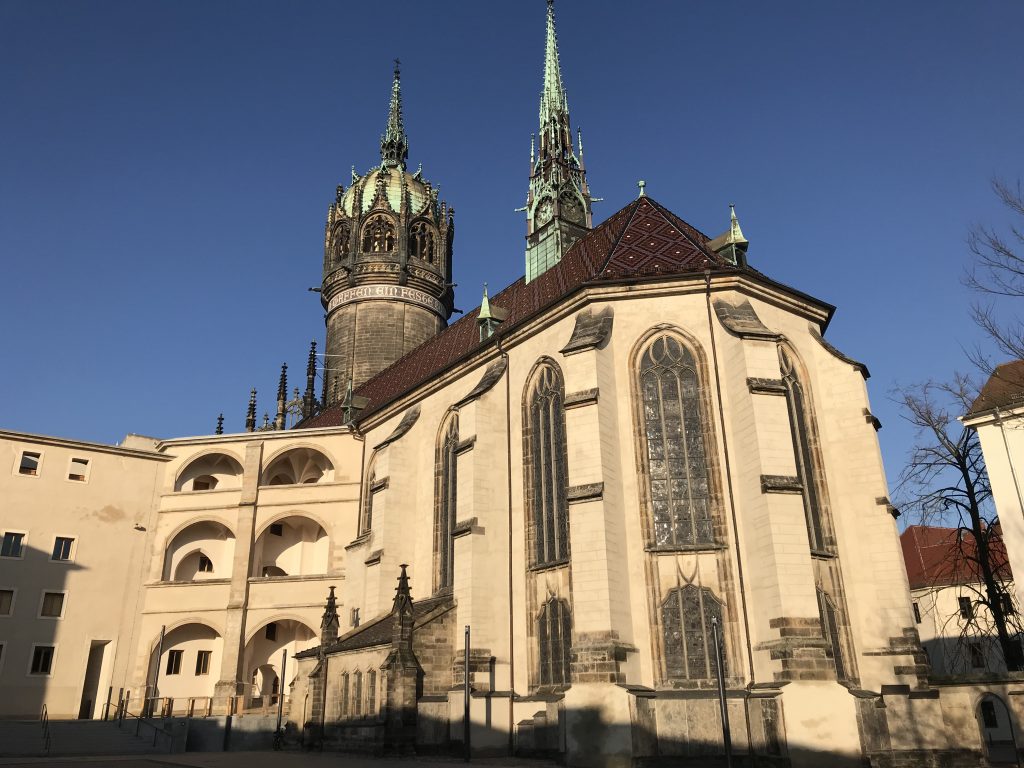Martin Luther (1483-1546) was a German priest, theology professor, and monk. By starting the Reformation in the early 16th century and founding Protestantism (or Lutheranism), Luther’s influence on the modern Christian church is almost beyond compare.
There are two fascinating UNESCO World Heritage sites in Germany that largely or partly feature Martin Luther – read on to find out more!

Martin Luther Memorials in Eisleben and Wittenberg – World Heritage Site
For our visit to this Martin Luther UNESCO World Heritage site, we decided to focus on the town of Wittenberg. This is where Martin Luther lived for much of his life, and it’s also here that the famous story of Luther nailing his “95 Theses” (or theological disagreements with the Catholic church) to the door of the local church is located.
Sadly, the original doors from the story were lost in the 18th century, but the replacement bronze doors have the 95 Theses moulded directly into the metal. Luther’s tomb still exists inside the church as well.
There is also St Mary’s Church, a smaller church where Luther often preached. This was where early Protestant services took place (often preached by Luther himself), and where Mass was first celebrated in German. Martin Luther himself was even married here, as once he had been excommunicated from the Catholic church, he was free to marry!
Another key attraction in Wittenberg is Lutherhaus, called home by Luther for almost his entire adult life. This is where he wrote much of his prolific output: sermons, hymns, letters, and essays. Originally a monastery, these days it’s a museum dedicated to the memory and work of Martin Luther.
Wartburg Castle – World Heritage Site
The other Martin Luther World Heritage sites is Wartburg Castle, near Eisenach in central Germany. Originally built in the Middle Ages (probably mid-11th century), Luther spent around 18 months in hiding here in 1521 after he was excommunicated from the Catholic Church. It was here that he translated the Bible from Latin into German, changing forever the relationship between the church and the people.
The castle was a fascinating spot to visit on a snowy December day, located on a rock in the middle of a picturesque forest! We also enjoyed other parts of the castle, such as the setting for the legendary Sangerkrieg, a battle of musicians where the losers were put to death! The castle was also the home of St Elisabeth of Hungary, so there was a lot of interesting stuff dedicated to her as well.
Conclusion
Hopefully you enjoyed this guide to the Martin Luther World Heritage sites. If you’re interested in other fascinating religious World Heritage sites, consider checking out the Fortified Churches Romania World Heritage Site. The World Heritage Sites in Java, Indonesia, also features two of the world’s most incredible religious temples: Borobudur, and Prambanan.
